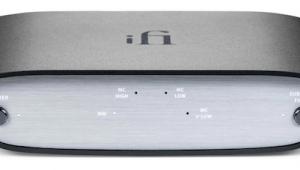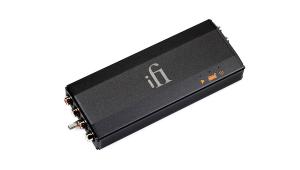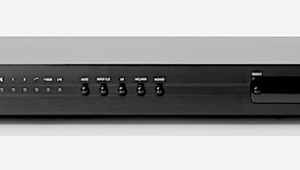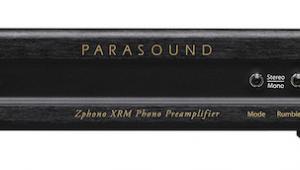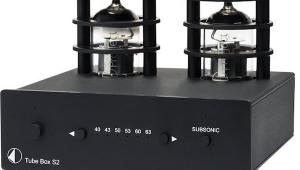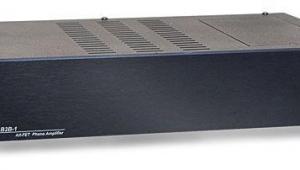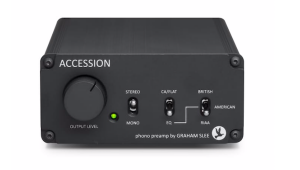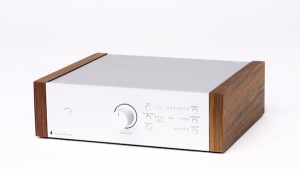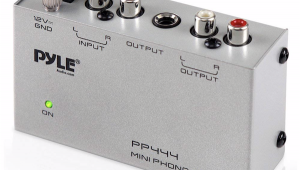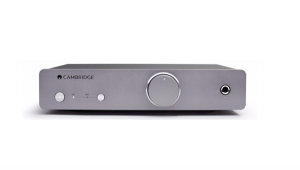Rega's Aria MM/MC Phono Stage Mirrors the Company's Turntable Sound
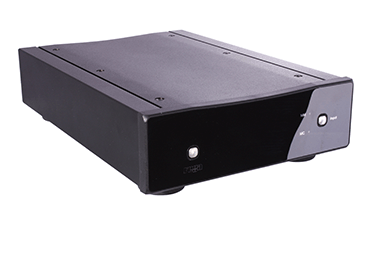
Circuit highlights include a self-adjusting servo control to keep the MC input circuit at its optimum by compensating for ambient and/or operating temperature variations. The MC section features parallel connected low noise FETs, while the MM section uses bipolar transistors similarly configured. Aria’s chassis is designed to reject RFI/EMI and the overall attention to detail paid by Rega’s engineers is impressive, particularly given the reasonable price point.
The Aria’s sound compliments that of the recently introduced RP-8 turntable: it is fast, taut, offers precise transient performance and scores high in the “slam” department.
The one box design has separate MM and MC inputs—indeed, separate MM and MC amplification circuitry— and via a series of rear panel dipswitch configurability for moving coil capacitive and resistive loading as well as for two gain levels of 63.5 and 69.3dB.
These are relatively high gain levels that assure the Aria can handle even the lowest output moving coil cartridges.
Though these gain figures are more appropriate for very low output moving coil cartridges (.2mV and .1mV respectively) Rega’s engineers have designed the circuit to have comfortable overload margins. That is a good thing considering that Rega’s own Apheta MC cartridge outputs .5mV, for which a more appropriate gain amount would normally be around 56dB.
Using the Hi-Fi Sound test record’s 1kHz 5cm/sec test track and its .5mV Apheta cartridge into the high gain setting, Rega claims the Aria’s output to be a comfortable 1.35V, which should be sufficient for any active preamp input (most CD players output around 2V, which is why you have to usually turn the volume up somewhat when playing records).
Load resistance choices here via dipswitch are 400,150,100 and 70 ohms. These are sensible choices. Not offering you a 47Kohm option prevents end-users from exercising their worst audiophile “instincts” thinking such a setting produces a more “open” sound. It doesn’t. It simply allowed the cartridge’s high frequency resonance to fully express itself, with naïve listeners confusing it with “air.”
I auditioned the Aria using both Rega’s Apheta cartridge ($1795) and the far more expensive recently updated Transfiguration Phoenix ($4249) and for MM input, Sumiko’s Blackbird high output moving coil cartridge ($1099). I also used the Musical Fidelity M1 Vinl MM/MC phono preamp ($1199) as a price-point reference. I was so impressed with that one I bought the review sample.
Compared to the M1Vinl the Aria produced greater dynamic slam, punchier bass, more focuses image definition with all three cartridges and it did so without adding obvious colorations, particularly in the upper octaves where extension at this price point often adds unpleasant aggression and/or metallic colorations. However, the M1 produced a somewhat warmer and relaxed sound, that might appeal more to some tastes.
For instance, on an original “pink label” Island pressing of Cat Stevens’ Mona Bone Jackon (ILPS 9118), the Aria’s reproduction of the bass line was clearly superior in terms of extension, attack and texture, the Vinl’s was more sluggish, yet it had an attractive elasticity. The vocals can be a bit bright on the opening track and that worked to the Aria’s disadvantage, though on better recordings the Aria’s upper octaves were sharply drawn but not clinically so. BTW: the original "pink label" pressing has the STERLING stamp and is initialed by both "RL" (Bob Ludwig) and "LH" (Lee Hulko). The brown label A&M pressing has just "LH". The "pink rim" Island second press was mastered in the U.K. by "A-nonymous" and was worth every bit of the €1 I paid for it.
Cartridge choice is critical here. The M1 would work better with brighter cartridges, producing a more balanced combination, while the Aria combined with a more supple-sounding cartridge might produce a more idea balance—that is unless you like the more taut ride for all of your listening, for instance if you are exclusively a rocker.
The upcoming Analog Productions reissue of the RCA “Living Stereo” classic “The Pines of Rome/The Fountains of Rome” (LSC-2436) is a reissue of a legendary recording and performance that was recalled after the “1s” (first lacquer) pressing because its dynamic range was too great for most tonearm/cartridge combos of the day to deal with. This reissue (as well as an earlier one from Classic Records) restores the dynamics and betters the original in just about every category, though of course the diehards will vehemently disagree. Less power to them!
This was always a somewhat bright and aggressive recording and this reissue doesn’t attempt to tamp that down. However it seems to have removed the original’s hard glaze without in any way damaging the bracing upper octaves.
On state of the art phono preamps, the results are stunning and the differences between the “top shelf” items and those like this built to a price point become clear, particularly in terms of instrumental attack suppleness, sustain generosity and length and quality of instrumental decay. These are less critical when listening to rock.
Here, given a choice of an “expressive” performer like the Aria and a more laid back, warmer sounding one, the latter wins out, admittedly on a system that’s hardly “budget.” You give up a great deal in terms of dynamics, rhythmic thrust and low frequency “punch” to get warmth and relaxation. This kind of “Sophie’s choice” is what makes buying at this price point so difficult.
The point is, at this price point, when choosing a phono preamp, you have to carefully balance your system as it currently exists with where you might want to take it and how adding a dynamic, expressive and wide band performer like the Aria might affect it now and in the future. In terms of dynamic excitement, musical grip, bass “punch” and high frequency transient precision without overly aggressive “etch”, the Aria is price-point winner, but if your moderately priced cartridge is already on the aggressive side, adding the Aria might take your system “over the top”.
That said, with the right cartridge and in the right system and with the right music, the Rega Aria will be an ear-opener. If your system is giving you a case of the “blahs” the Aria will definitely wake it up—and in a way you will like. Add to that, black backgrounds, ample gain and very high build quality and Rega’s latest is easy to recommend.
P.S.: Analogplanet will not become a repository for the kind of superlative-laden, hyperbolic exclamatory puke that infects too many of the Internet's audio-related websites. For that you'd BEST go elsewhere.





